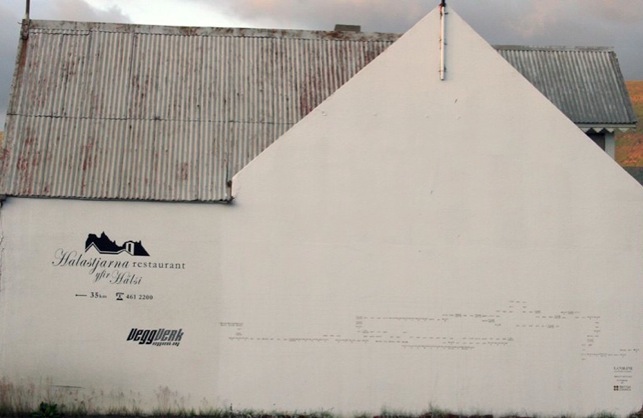Bridget Kennedy

Laugardaginn 5. júlí 2008
opnar Bridget Kennedy sýninguna L A N D L I N E
(pantone coated) á VeggVerki.
Sýninginn stendur til 24. ágúst 2008.
"I am going to make line of pantone codes. This line represents where the water meets the land of Akureyri."
Bridget Kennedy (b. 1970 Voorburg, Netherlands) is a compulsive organiser.
She uses systemisation as a survival tactic, as a means of creating a little quietness amidst the clamour of modern life. For the majority of the past decade she has lived and worked on the outskirts of a small village in the North of England. Whilst seeking out wildness and wilderness through interaction with nature she succumbs to the ever present desire to tame and control. She sees herself as a librarian of the landscape, constantly cataloguing.
A fascination with maps brings together her two main interests: landscape and the translation of information. Looking is an activity that is under constant scrutiny in Kennedy's practice, with regard to cartography she is intrigued by the leap of imagination that a map-reader undergoes in order to
understand a three dimensional environment when looking at a set of symbols
on a piece of paper. She expects her viewers to work together with her on their relationship with her pieces, giving clues in titles such as "Trying to understand the creation of the universe with beads and wire" and "Every letter is a number, every number is a colour (creation myths one and two)".
The grid is a re occurring feature in her work; it is an obvious yet effective tool for organisation but also a framework through which much of the imagery we are exposed is projected. In a time when so much of our experience is built upon or sustained by images from television, magazines and family albums Kennedy explores the territory between the emotional and the technological by considering the process of translation that information (especially that of digital imagery) undergoes.
In recent studio based work she has been re-coding texts and images that relate to landscape then meticulously hand replicating this information to create complex drawings and sculptures. Cool and impersonal at first glance these works expose a very human fragility on closer inspection. Imperfections resulting from the hand-made, home-spun and irrational character of the romantic subtly compete with the rigid framework.